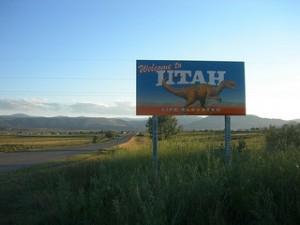In The Spirit Level: Why Greater Equality Makes Us Stronger, the landmark 2009 book on the impact of deep economic divides on our daily lives, the surprise societal star — at least for most American readers — turns out to be the state of Utah.
On all sorts of measures of social decency, The Spirit Level compellingly documents, Utah rates near the top among America’s 50 states. People in Utah trust each other more than people in other states. They drop out of school less. They seldom go to jail — or fall victim to homicides. Their teenage daughters have fewer babies. Their kids score better on math and literacy tests.
In Utah, obesity rates run much lower than the national average. Overall, people in Utah live longer than people in the rest of the United States.

jimmywayne/Flickr
Utah, Spirit Level authors Richard Wilkinson and Kate Pickett show, also happens to rate as one of America’s most economically equal states, and these two traits — high ratings on measures of social decency, a low level of inequality — turn out to match up all over the world.
Among the world’s developed nations and among U.S. states, Wilkinson and Pickett have found, the same trend repeats over and over: The more equal a society’s income distribution, the better the quality of that society’s daily life.
In the United States, our contemporary political discourse typically doesn’t divide states on less unequal/more unequal lines. We talk instead about “red states” and “blue states,” Republican states and Democratic states — and Utah ranks as one of the reddest of all.
But Utah, as contributing editor Bob Bernick of Utah Policy has just noted, also embraces “unique social attitudes” that have nurtured a high level of economic equality over time.
Utah’s uniqueness, a new Utah Foundation study suggests, may now be evaporating. The foundation’s just-released report, Climbing Toward the American Dream, compares incomes, inequality, and mobility in Utah over two periods, 1994 through 2002 and 2003 through 2011.
Over the course of these years, the report shows, Utah has become distinctly more unequal. The state has begun displaying the same basic inequality trends as the rest of the United States. Between 1994 and 2011, incomes of Utah’s richest 1 percent jumped over three times faster than Utah’s middle 20 percent.
The encouraging news amid these statistics? Utah income inequality, the Utah Foundation points out, still remains “near the lowest in the nation.” In Utah, households in the state’s most affluent 5 percent have 8.9 times more income than their counterparts in the poorest fifth. The U.S. average by this yardstick: 13.3 times.
The discouraging news? Utah has become so “red state” politically that many state lawmakers are now talking policies — “like doing away with mandatory public education,” as analyst Bob Bernick observes — that lock in privilege and directly threaten the state’s more egalitarian traditions.
Given these trends, Utah could yet become — on income distribution — much more a cautionary tale than a model to emulate.